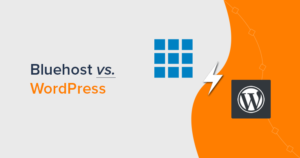
Imagine this: waking up in Bali, sipping coffee with a view of the rice terraces, and earning money while sharing your experiences. Sounds like a dream, right? For many travel bloggers, it’s reality. You can do it too! Let’s dive into the step-by-step guide for How to Start a Successful Travel Blog and bring in profit!
Section 1: Laying the Foundation: Niche, Branding, and Platform
Before starting your blogging journey, you need to plan your route. These pre-launch decisions shape your blog’s direction. A solid foundation is key to success. What type of traveller are you aiming to attract?
Subsection 1.1: Defining Your Travel Niche: Finding Your Unique Angle
Stand out from the crowd by finding your niche. Don’t just be another generic travel blog. Are you into budget travel? Perhaps solo female travel is more your style? Or maybe adventure travel gets your heart racing? How about focusing on culinary experiences?
A niche helps you target a specific audience. They’ll appreciate your specialised knowledge. Now, think hard about your passions and interests. What makes your travel style unique?
Actionable tip: research existing blogs in your chosen niche. Identify any gaps in the market. Is there a topic they’re not covering thoroughly? This is your chance to shine!
Subsection 1.2: Crafting Your Brand: Name, Logo, and Voice
Your brand is how people recognise and remember you. It’s more than just a name and logo. It’s the whole package.
First, choose a memorable blog name. It needs to be relevant to your niche. Think about something catchy and easy to spell.
Next, design a visually appealing logo. You might consider hiring a graphic designer. A professional logo makes you look credible.
Then, develop a consistent brand voice. Are you funny and informal? Or serious and informative? This tone should be consistent in all your content. This builds trust and recognition with your audience. It lets them know what to expect.

Subsection 1.3: Choosing Your Platform: Self-Hosted WordPress vs. Other Options
Where will you build your online home? This is a significant decision that will shape your blogging journey. There are many blogging platforms to consider, each with its own pros and cons. You have WordPress.org, Blogger, Medium, and more. Understanding these options will empower you to make the right choice for your blog.
While there are free options, self-hosted WordPress gives you total control. You can monetise your blog without restrictions.
Here’s a quick breakdown. First, register a domain name. Then, find a web hosting provider. It’s like renting space on the internet.
Actionable tip: Bluehost and SiteGround are reputable hosting providers. They offer easy WordPress installation. This makes the process simple for beginners.
Section 2: Setting Up Your Blog for Success: Design, Content, and SEO
Now, it’s time to build your blog. A functional and engaging blog is key. These are crucial for attracting and keeping readers. What is the most critical factor of your blog design?
Subsection 2.1: Designing a User-Friendly Website: Theme Selection and Customization
Your website design affects user experience. If your site is hard to navigate, people will leave. A good design keeps people on your site.
Select a responsive WordPress theme. This means it looks good on all devices. Make sure it’s SEO-friendly. A fast-loading theme will help you get higher rankings.
Then, customise the theme to reflect your brand. Use your logo and colours. This creates a consistent visual identity. Ensure easy navigation. Make sure your site is readable on mobile devices.
Subsection 2.2: Creating High-Quality Content: Writing Engaging Travel Stories
Content is king! Original, informative, and engaging content is essential. This is what will keep people coming back.
Mix it up with different types of content. Blog posts are a must. Include photos and videos to bring your stories to life. Consider creating travel guides.
Use storytelling techniques in your writing. Transport your readers to the destination. Share your personal experiences and connect with them.
Actionable tip: Here’s a checklist for writing high-quality posts. Ensure the post is well-researched. Proofread for grammar and spelling errors. Use headings and subheadings to break up the text. Include a call to action.
Subsection 2.3: Optimising Your Blog for Search Engines (SEO): Keyword Research and On-Page Optimization
SEO helps people find your blog on search engines. Understand the basics and see the benefit of increased traffic. More traffic can result in more significant income.
Start with keyword research. What are people searching for? Use tools like Jaaxy or Google Keyword Planner. Find relevant keywords for your niche.
Then, optimise your pages. Use keywords in your title tags and meta descriptions. Use header tags (H1, H2, H3) to structure your content. Add alt text to your images.
Site speed is also essential. A fast website ranks higher. Ensure your site is mobile-friendly. Many people browse on their phones.
» See Also: Jaaxy Membership Options «
Section 3: Building Your Audience: Promotion and Social Media
Building an audience is about attracting and keeping readers. You need to get your content out there. How can you connect with like-minded travellers?
Subsection 3.1: Leveraging Social Media: Building a Community and Driving Traffic
Social media is your best friend. Use it to build a community and drive traffic.
Choose the right platforms for your niche. Instagram is great for visuals. Facebook is good for building a community. Twitter is useful for sharing quick updates. Pinterest is perfect for travel inspiration.
Create engaging content for each platform. Post regularly and interact with your followers. Use relevant hashtags. Run contests and giveaways.
Use social media to drive traffic to your blog. Share links to your latest posts. Encourage people to visit your website.
Subsection 3.2: Guest Blogging and Collaborations: Expanding Your Reach
Guest blogging is writing for other blogs. It’s a great way to get exposure and backlinks. Backlinks are links from other websites to yours. They help your SEO.
Find guest blogging opportunities. Look for blogs in your niche. Reach out to the owners. Pitch them some ideas.
Collaborate with other travel bloggers. You can do joint projects or promote each other’s content.
Subsection 3.3: Email Marketing: Building a Loyal Audience
Building an email list is essential. It allows you to connect with your audience directly.
Offer valuable content in exchange for email sign-ups. This is called a lead magnet. It could be an e‑book, a checklist, or a free travel guide.
Send regular newsletters and updates. Share your latest blog posts. Offer exclusive content to your subscribers. Keep them engaged.
Section 4: Monetising Your Travel Blog: Turning Your Passion into Profit
Let’s talk about money. There are many ways to generate income from your travel blog. How will you turn your passion into a paycheck?
Subsection 4.1: Affiliate Marketing: Earning Commissions on Travel Products and Services
Affiliate marketing is earning commissions on sales. You promote other people’s products and services. When someone buys through your link, you earn a commission.
Find relevant affiliate programs. Amazon Associates is a popular option. Booking.com is excellent for travel.
Promote affiliate products in your content. Write reviews. Recommend products that you genuinely like.
Subsection 4.2: Display Advertising: Generating Revenue with Ads
Display advertising is placing ads on your blog. When people see or click on the ads, you earn money.
Google AdSense is a popular ad network. There are other options, too.
Consider the pros and cons of display advertising. It’s easy to set up, but it can be intrusive.
Optimise ad placement for maximum revenue. Don’t overload your site with ads.
Subsection 4.3: Sponsored Content and Brand Partnerships: Working with Travel Brands
Working with travel brands can be lucrative. Brands pay you to create content. This could be blog posts, videos, or social media posts.
Pitch sponsored content ideas. Show brands what you can offer. Create valuable content for brands. Be transparent with your audience.
Section 5: Tracking, Analysing, and Adapting: Continuous Improvement
Tracking your progress is crucial. Analysing the data is essential for growth. You should keep improving as you go. What is the most vital metric to track on your travel blog?
Subsection 5.1: Using Google Analytics: Understanding Your Website Traffic
Google Analytics tells you about your website traffic. Set it up to begin tracking valuable insights.
Track key metrics like traffic, bounce rate, and time on site. The bounce rate is the percentage of people who leave after viewing one page. Time on site tells you how long people stay on your website.
Analyse the data to understand user behaviour. Where are people coming from? What content are they reading? This will help you improve your content strategy.
Subsection 5.2: Monitoring Your SEO Performance: Tracking Keywords and Rankings
Track your keyword rankings. Use Google Search Console. This will tell you where your website ranks for specific keywords.
Identify areas for improvement. Are there keywords you’re not ranking for? Optimise your content.
Subsection 5.3: Adapting Your Strategy: Staying Relevant in a Changing Landscape
The travel blogging world is constantly changing. Stay up-to-date with industry trends. Adapt your content and marketing strategies.
What works today might not work tomorrow. Be flexible and willing to experiment. This will keep you ahead of the game.
Conclusion
Starting a successful travel blog takes work. It requires passion, persistence, and continuous learning. Follow these steps, and you’ll be well on your way. Keep writing, keep exploring, and keep sharing your adventures! Your dream life is waiting.

